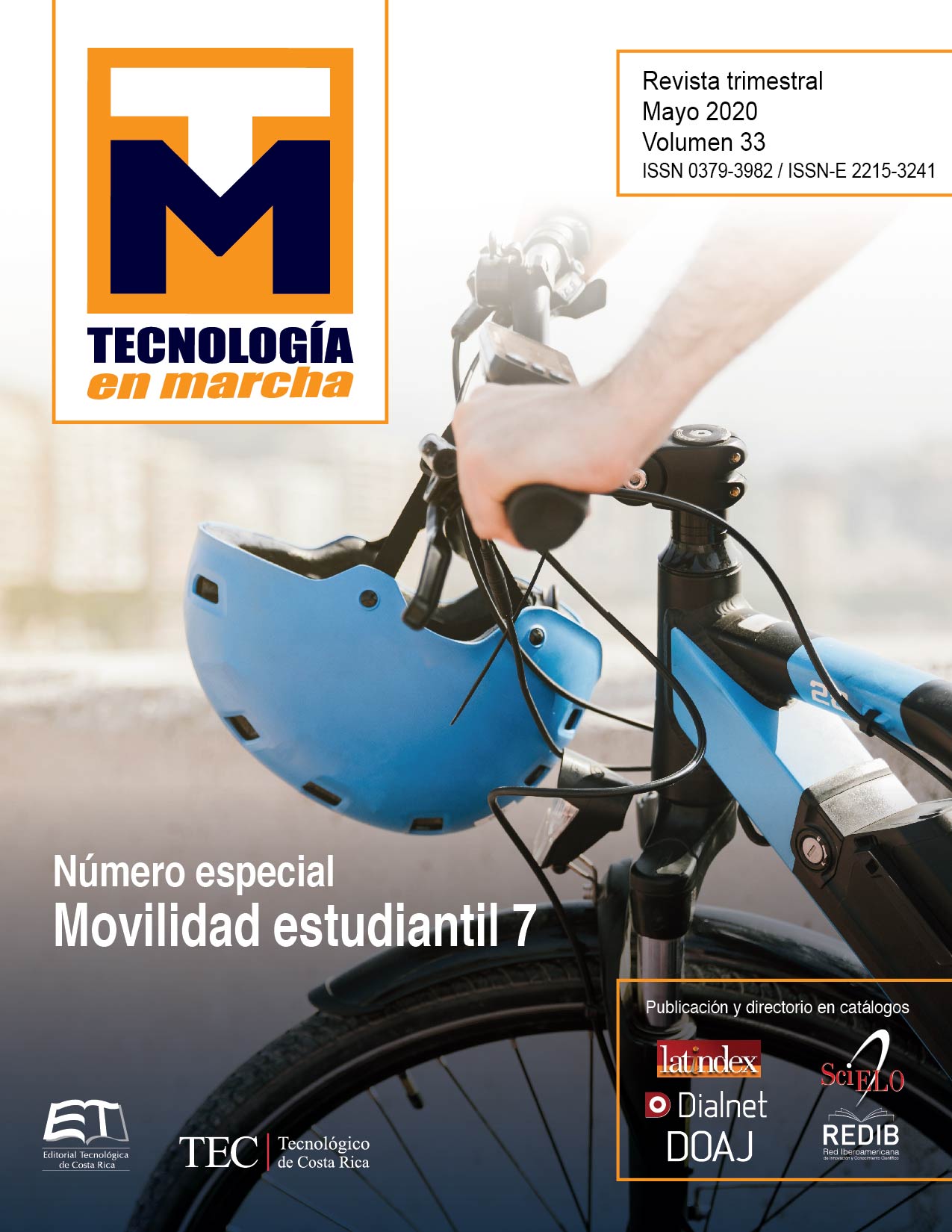Design and implementation of a nonlinear controller for a robotic arm with flexible joints and rigid links
Main Article Content
Abstract
Robotic systems are becoming more and more complex and the traditional control law theories lose robustness, increasing the difficulty with which the robot can be controlled to interact with the environment around it. The objective of this research work is the study of complex nonlinear systems with the particularity of having flexible joints and rigid links. Such flexibility causes an interesting behavior in the robotic systems because duplicates the number of variables involved in the control task. Several studies have been carried out in the research of flexible robots, however most of them use the classical Euler-Lagrange framework to describe the mechanical systems. This work has been focused on the implementation of nonlinear controllers within the port-Hamiltonian framework, and the singular perturbation multi-scale systems theory. In this sense, the mathematical description of two different control laws proposed by [1] and [2] are presented and adapted to the physical plant of the two degrees of freedom Quanser robotic arm. Moreover, the equations of the proposed port-Hamiltonian controllers have been implemented into a simulation to test the validity of the control laws for the rigid and the flexible configuration of the robot. Finally, the controllers have been implemented into the physical plant of the robotic arm to validate experimentally the proposed mathematical control theory. The experimental implementation of the proposed port-Hamiltonian controllers showed an improvement in the control of the position error for the rigid and the flexible configuration in comparison with a benchmark controller proposed by the manufacturer of the robotic arm, with an error rate for the RMS value of the signal lower than 1.2% of the RMS value of the desired trajectory. Further studies and experimental tests should be aimed to the implementation of port- Hamiltonian controllers to achieve an even lower error rate.
Article Details

This work is licensed under a Creative Commons Attribution-NonCommercial-NoDerivatives 4.0 International License.
Los autores conservan los derechos de autor y ceden a la revista el derecho de la primera publicación y pueda editarlo, reproducirlo, distribuirlo, exhibirlo y comunicarlo en el país y en el extranjero mediante medios impresos y electrónicos. Asimismo, asumen el compromiso sobre cualquier litigio o reclamación relacionada con derechos de propiedad intelectual, exonerando de responsabilidad a la Editorial Tecnológica de Costa Rica. Además, se establece que los autores pueden realizar otros acuerdos contractuales independientes y adicionales para la distribución no exclusiva de la versión del artículo publicado en esta revista (p. ej., incluirlo en un repositorio institucional o publicarlo en un libro) siempre que indiquen claramente que el trabajo se publicó por primera vez en esta revista.
References
Jardon-Kojakhmetov, H., Munoz-Arias, M., and Scherpen, J. M. A. (2017). Model reduction of a flexible-joint robot: a port-Hamiltonian approach.
Reyes-Baez, R., van der Schaft, A., and Jayawardhana, B. (2016). Tracking Control of Fully-actuated Mechanical port-Hamiltonian Systems using Sliding Manifolds and Contraction.
Canudas de Vit, C., Siciliano, B., and Bastin, G. (1996). Theory of robot control. Springer.
De Luca, A. (2014). Flexible Robots. Encyclopedia of Systems and Control.
Spong, M. W. (2014). Modeling and Control of Elastic Joint Robots. Journal of Dynamic Systems, Measurement, and Control.
Kokotovic, P., Khalil, H., and O’Reilly, J. (1986). Singular Perturbation methods in Control: Analysis and Design.
Kokotovic, P. (1984). Applications of Singular Perturbation techniques to Control problems. 26(4):501–550.
Kokotovic, P., O’Malley, R., and Sannuti, P. (1976). Singular perturbation and order reduction in control theory An overview. 12(2):123–132.
Van Der Schaft, A. and Maschke, B. (2003). Port-Hamiltonian systems: a theory for modeling, simulation and control of complex physical systems.
Quanser (2006). 2DOF Serial Flexible Joint Robot. Reference Manual.
Van Der Schaft, A. (2000). Port-controlled Hamiltonian systems: towards a theory for control and design of nonlinear physical systems. Journal of the Society of Instrument and Control Engineers of Japan (SICE), 39(2):91–98.
Spong, M. W. (1990). Control of flexible joint robots: a survey. technical, University of Illinois at Urbana- Champaign.
V. Andrieu, B. Jayawardhana & L. Praly. Transverse exponential stability and applications. IEEE Transactions on Automatic Control, 2016.
Ghorbel, F. and Spong, M. (2016). Integral manifolds of singularly perturbed systems with application to rigidlink flexible-joint multibody systems. International Journal of Nonlinear Mechanics.
Dirksz, D. A. and Scherpen, J. M. A. (2013). On tracking control of rigid-joint robots with only position measurements. IEEE Transactions on Control Systems Technology.
Van Logtestijn, M. (2010). Stabilization and tracking control of a planar robot withonly position measurements. bachelor thesis, University of Groningen.

